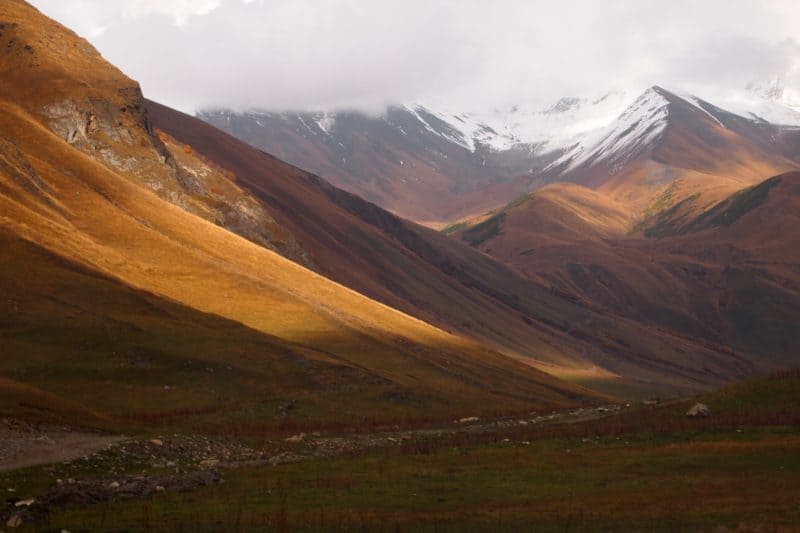Georgia: Traveling from the 12th to the 21st Century
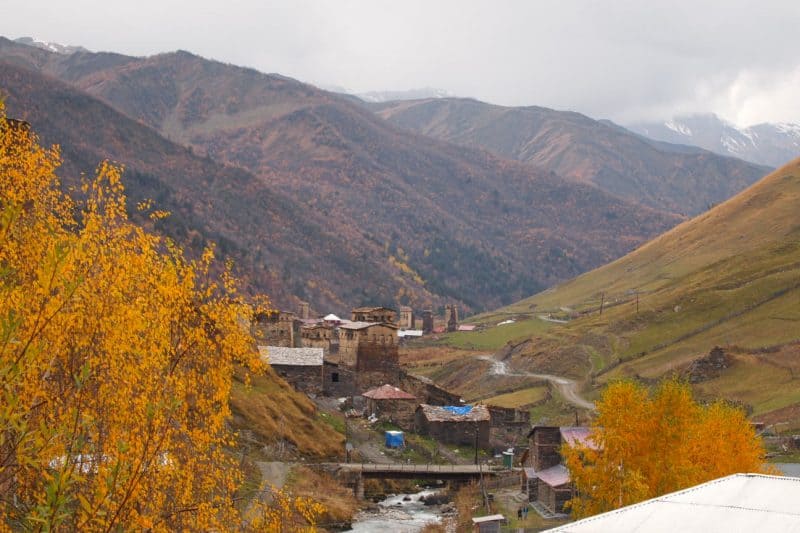
We woke up in Mestia, about 30 km from the Russian border, and at 8 am we hit the winding road for a marathon 11-hour journey all the way back to the capital, Tbilisi. The previous day we had ventured even further up north and visited a church with frescoes still perfectly clear and untouched that were painted in the 10th century in the Nakipari church in Ipari.
To enter the tiny church, the women needed to don apron-like skirts, and put on headscarves. We had to bend down low to enter the five-foot high wooden entranceway, and once we were inside, the frescoes came alive.
One showed a mean-looking man torturing St. George, his body stretched over a wheel, his face in pain. Unlike many of these priceless frescoes that were whitewashed by Georgia’s many invaders, these survived due to their remoteness, and are absolutely stunning. The wide-eyed face of Jesus with the special Georgian cross, a peace sign with drooping arms, were mixed with more scenes from the Bible.
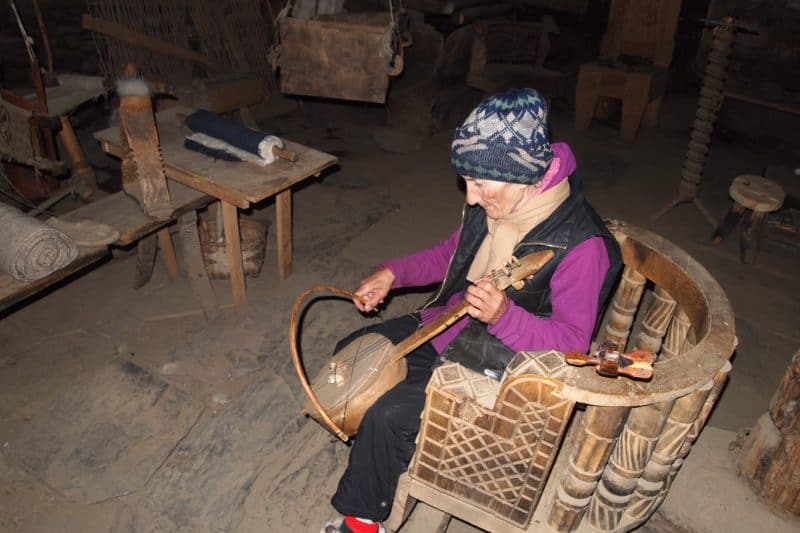

In the distance, Ushba, the nation’s highest peak, snow-covered and foreboding, could be seen briefly through the clouds, at more than 5000 meters high.
Steep brown foothills lead up to a New England like view of striking foliage, and all over were the famous towers, built for protection from invading hordes, and today, symbols of the Svaneti region.
We walked amongst the ancient buildings that had been there since the 1200s, and small children gave each other rides on a wheelbarrow. Cows walked loose and some villagers were harvesting potatoes in hilly fields. At an ethnographic
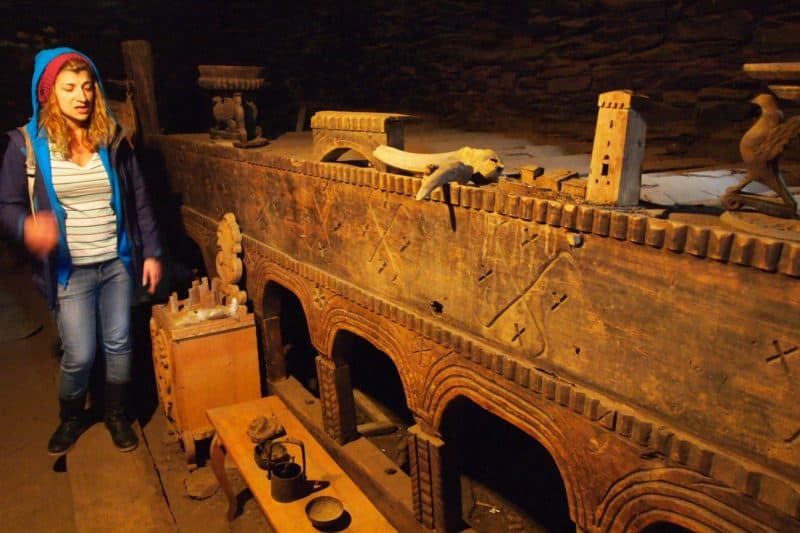
museum a local women who said she’s lived in Ushgali her whole life played us a few songs on a Svaneti guitar and a tiny stringed instrument. Her smile, like so many we have seen this trip, welcomed us to this hard to reach place with an open heart.
The trip to get to these villages is only 44 kilometers but it took us three hours over some of the roughest roads in the country. Locals make as much as they can for themselves–baking bread, making jam, growing vegetables and sustaining themselves as their ancestors once did.
We learned that the tough drive there is much easier in the winter, when the potholes that slow the jeeps to a crawl are filled with snow. The next day we had a marathon drive from Mestia to Tbilisi, and it was a wonderful chance to see a huge swath of this fascinating country.
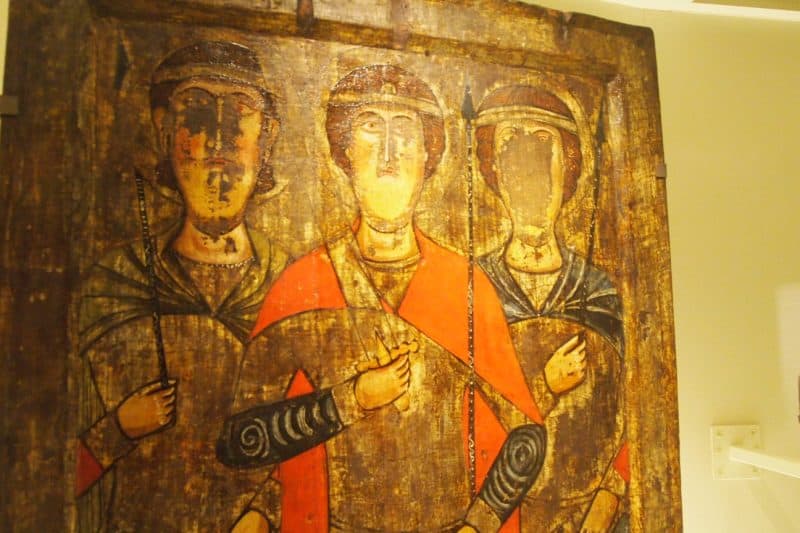
It’s a fantastic and remote destination that may be a little hard to get to, with no direct flights from the US, but it’s guaranteed that you will never forget the scenes such as life in this village and the sincere hospitality guests receive from Georgians.
As long as you promise not to invade them and you don’t try to sway them from Christianity you will be welcomed!
